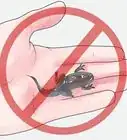X
wikiHow is a “wiki,” similar to Wikipedia, which means that many of our articles are co-written by multiple authors. To create this article, 14 people, some anonymous, worked to edit and improve it over time.
This article has been viewed 7,359 times.
Learn more...
Fire Belly toads are a common choice among beginner amphibian owners for their ease of care and charming appearance. These diurnal toads are active during the day and have charismatic personalities. If you want to give your amphibious friend a proper living environment, you need to know how to correctly set up a Fire Belly toad tank.
Steps
-
1Find an enclosure that is at least 10 - 15 gallons. Though these toads are small, their active nature requires a slightly larger enclosure. A 10 or 15 gallon tank can house 2 - 3 toads, though you'll need a larger enclosure if you plan to own more toads. Floor space is important, choose tanks that are wider rather than taller.
- A traditional aquarium is commonly used, though other enclosures like a plastic storage bin is not uncommon among Fire Belly toad owners.[1] Be sure whatever type of housing you choose is the appropriate size and can hold water.
- Make sure your tank has a tight lid, as these toads are known to be escape artists.
-
2Add dechlorinated water to the tank. Fire Belly toads do best in a semi-aquatic setup. About half of your enclosure should be land and the other half should be a few inches of water. You can do this without substrate by placing a few large, flat rocks throughout the tank. Fill the tank with 1 - 2 inches of water and make sure the toads have easy access to dry land.[2]
- You can also choose to place a large container of water in a few inches of substrate. The container needs to be large enough to cover half of the tank and should be surrounded with a suitable substrate.[3] Coconut husk fiber, sphagnum moss, or a soil based substrate is commonly used.
- Dechlorinate any water you add to the tank. You can do this by buying a bottle of dechlorinator and following the instructions on the bottle. Another option is to let the water sit for over 24 hours to allow the chlorine to evaporate.
Advertisement -
3Maintain the proper temperature and humidity. The temperature of their enclosure should stay around 70 to 75°F during the day and can drop to 60 to 65°F at night.[4] You won't need an external heat source or basking light unless your room temperature dips below 60°F. Fire Belly toads require a humidity of around 50% to 70%.[5] This is typically achieved with the water already present in the tank, but your enclosure may require occasional misting if the humidity drops lower.
-
4Consider adding real plants. Adding live plants to your terrarium means an extra thing to keep an eye on, but it creates a more natural environment for your toad and a more visually appealing setup. Many plants require soil to be planted, so a soil-based substrate is recommended. Common houseplants such as pothos and heart-leafed philodendron are hardy and can be easily grown in a toad terrarium.[6]
- For aquatic plants, Java moss is easy to maintain and grow in water. Anubias plants and Java fern are also fairly easy to maintain and don't need to be planted in a substrate.
- Make sure you have the proper lighting your plants need to survive. Fire Belly toads don't require any special lighting, but some plants may need additional lighting to thrive.
-
5Add some additional decor. Consider giving your toads a hiding place or some logs to explore. A hide can be made from something as simple as half a flowerpot or you can get more creative. Driftwood and river rocks can give your enclosure a more natural look. If you don't want the hassle of live plants, fake plants can spruce up your tank as well.
- Inspect any decor for especially sharp or rough edges that could potentially injure your toad. Sand down sharp sections if possible.
-
6Introduce your toad to the enclosure. Once your tank is completely set up, you can add your new Fire Belly toad to the terrarium. Be sure to clean the enclosure as needed and perform weekly water changes to remove any waste that builds up. Remove any waste or uneaten or spoiled food daily to keep your toads healthy.
Advertisement
Community Q&A
-
QuestionWill my toad eat small minnows
 Ella GoughCommunity AnswerYes, if the toad is big enough.
Ella GoughCommunity AnswerYes, if the toad is big enough.
Advertisement
Warnings
- Be careful. Fire bellies are mildly poisonous.⧼thumbs_response⧽
- Wash hands with hot water and soap before and after making any contact with your animal. The oils on your skin can be harmful to them.⧼thumbs_response⧽
Advertisement
References
- ↑ http://www.exoticpetvet.com/fire-bellied-toad-care.html
- ↑ https://www.everythingreptiles.com/fire-bellied-toad/
- ↑ https://reptilesmagazine.com/the-fire-bellied-toad/
- ↑ https://www.thesprucepets.com/oriental-fire-bellied-toads-1236815
- ↑ https://www.joshsfrogs.com/catalog/blog/2019/12/fire-bellied-toad-care-sheet/
- ↑ https://reptilesmagazine.com/the-fire-bellied-toad/
About This Article
Advertisement
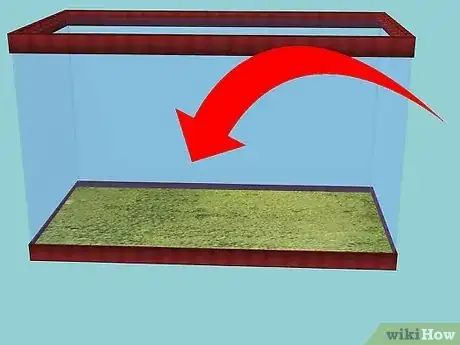


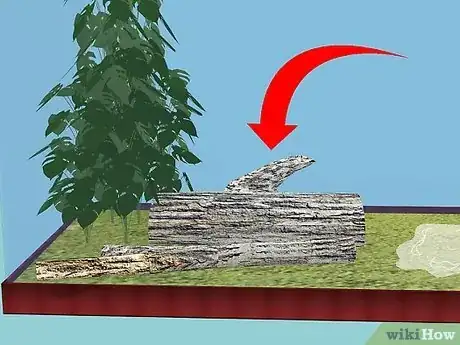



-Step-4.webp)
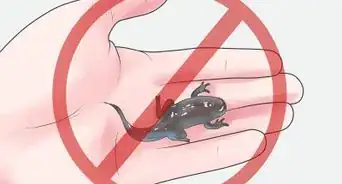







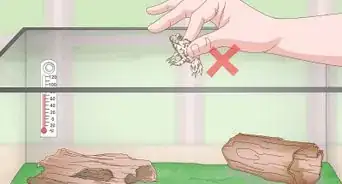








-Step-4.webp)
